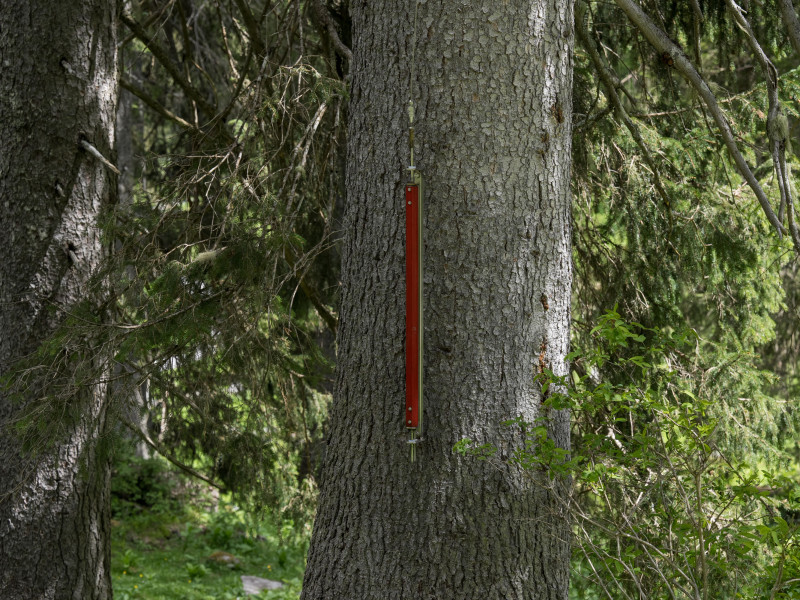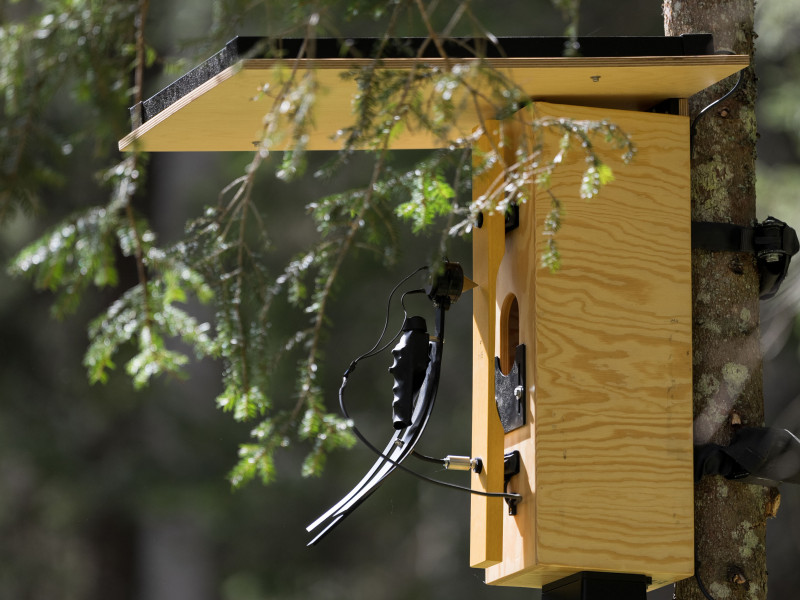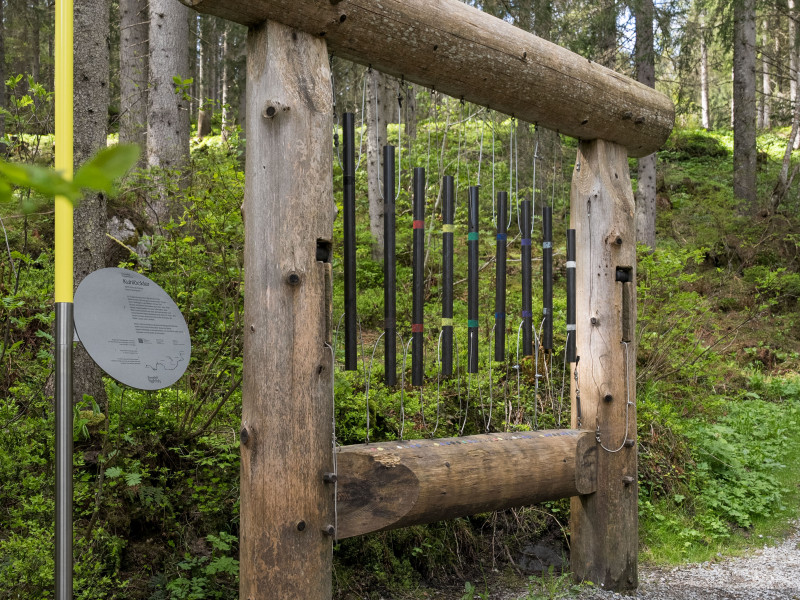
Modern sound technology makes it possible: the Edaphon on the Toggenburg sound trail leads you into the sound cosmos of the soil. The trail into the deep was created by Marcus Maeder – a Swiss musician and environmental scientist with a doctorate, an artist and researcher, composer and philosopher.
Sound cosmos of bugs
In the large black tent, you can lie on your front on the floor so that your head rests in a hollow. From this hollow come clicking and cracking, snapping and hissing noises. The more patiently you listen, the more varied and detailed the sounds that reach your ears become.
The sounds are coming from a little further away, where a microphone is stuck in the ground under a small black tent. With the help of modern technology, the sounds of the ground insects crawling undisturbed are made audible to the human ear and transmitted live into the big tent. The highly sensitive and specially prepared contact microphone first picks up tiny vibrations. A preamplifier then amplifies what it reports a thousandfold. An audio interface also converts the signals into digital data.
Audibility of the unheard
Listening to the ground in this way opens up a wide range of possibilities for both the musician and the scientist Marcus Maeder. As an environmental scientist and acoustic ecologist, he is working on a future method of measuring soil biodiversity using acoustic means. As an artist, he wants to appeal to people's senses and convey the fascinating diversity of soil dwellers. He hopes that this will raise people's awareness of the soil ecosystem.
"There are two areas in my life: the scientific and the artistic. Both often take place at the same time – usually in the course of exploring a landscape or a specific environmental issue."
Art installation and science
At the interface between sound installation and science, Marcus Maeder has not only developed the Edaphon, but has also carried out a number of projects and communicated the state of the forest for example. When he sticks his special microphones under the bark of trees, he can make the drought stress audible, which is affecting the entire forest. Whenever the water column in the tree vessels breaks, a sound in the ultrasonic range is produced.
The musician also sonifies the environmental data: temperature and humidity data are transformed into sounds. If these values change, the natural processes are mirrored in the alteration of the tones. From time to time, the Edaphon will be expanded to include sounds created using data sonification.
About the artist
Dr Marcus Maeder studied fine art at the Lucerne University of Applied Sciences and Arts, philosophy at the Open University of Hagen (D) and completed his doctorate in environmental systems science at ETH Zurich in 2023. He researches and teaches at the ZHdK's Institute of Computer Music and Sound Technology (ICST) and has been a Humboldt Research Fellow at the Freie Universität Berlin since 2023. His installations have received numerous awards and can be experienced worldwide – for example, at the UN Climate Change Conference COP21 (2015) or at the Tokyo Biennale (2023).
marcusmaeder.ch ↗

